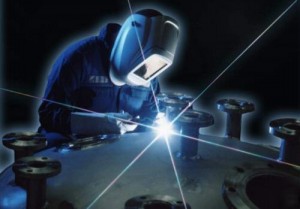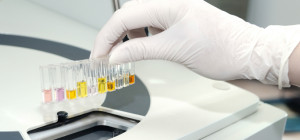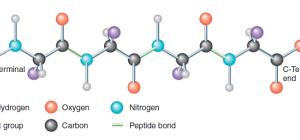 When most people hear the term "welding" they probably picture a guy wearing a medieval-looking mask, holding a blow torch to a giant piece of metal while sparks fly all around him. While this isn't completely off, it doesn't take into account the huge role that welding plays in industrial manufacturing. It's a crucial process in building automobiles, ships, rockets, aircrafts, bridges, and skyscrapers. Underwater welding is probably synonymous for most people with underwater basket weaving, but this is a very real profession that requires a great amount of expertise and can be a very lucrative career.
When most people hear the term "welding" they probably picture a guy wearing a medieval-looking mask, holding a blow torch to a giant piece of metal while sparks fly all around him. While this isn't completely off, it doesn't take into account the huge role that welding plays in industrial manufacturing. It's a crucial process in building automobiles, ships, rockets, aircrafts, bridges, and skyscrapers. Underwater welding is probably synonymous for most people with underwater basket weaving, but this is a very real profession that requires a great amount of expertise and can be a very lucrative career.
What is welding? In simple terms, welding is a process that bonds two metals together. It's one of a number of techniques for connecting metals, including brazing and soldering. The difference between soldering and welding, however, is that soldering simply joins the two metal pieces using a filler metal. Sort of like gluing two objects together, this bond is only as strong as the connecting material (the glue). Welding, on the other hand, actually creates a new compound by binding the two metals directly to each other to form a stronger, more effective bond. That's why it's the technique of choice for large-scale manufacturing.
Welding as we know it today started in the late-1800s during the Industrial Revolution with the development of electricity and mechanized manufacturing. However, welding had existed in various forms for thousands of years before that, dating as far back as 3000 BC in ancient Egypt. Ancient forge welding used a combination of heat and pressure, often by striking the red-hot metals with hammers, to bond them together. This process created the ancient weaponry, tools, and jewelry that played a major role in the rise and fall of empires throughout history.
There are a few different categories of welding that each require different techniques and equipment. Torch welding often has smaller-scale uses and can be easier for beginners. This technique utilizes an oxyacetylene blowtorch that the welder controls in addition to the welding rod—a long, thin rod made of a filler metal. The welding rod is heated by the blowtorch and fed along the weld seam in a back-and-forth motion. This creates a strong joint that unites the metal work pieces.
Arc welding uses a grounding wire and an electrode lead to connect the welding pieces to an electrical power source, similar to using jumper cables to connect car batteries. This connection creates an electrical arc that melts the metal pieces and a welding rod together to create the seam. Arc welding is more common for large-scale manufacturing uses.
Regardless of which welding technique you're utilizing, you'll need the proper tools and safety equipment. You will need a proper welding mask to protect your eyes from the brightness that welding produces. Durable work gloves are also important to protect against high temperatures, and a workspace with proper ventilation is necessary to protect yourself from harmful fumes. If you are a beginner who is wary of the steep prices behind some of the equipment, a great place to start is with used welding equipment. This will allow you to practice your skills and develop a knack for welding before investing in higher-priced equipment. This is a field that employs nearly half a million workers and a career that will continue to grow as automated processes can't match the steady hands of a skilled welder.







